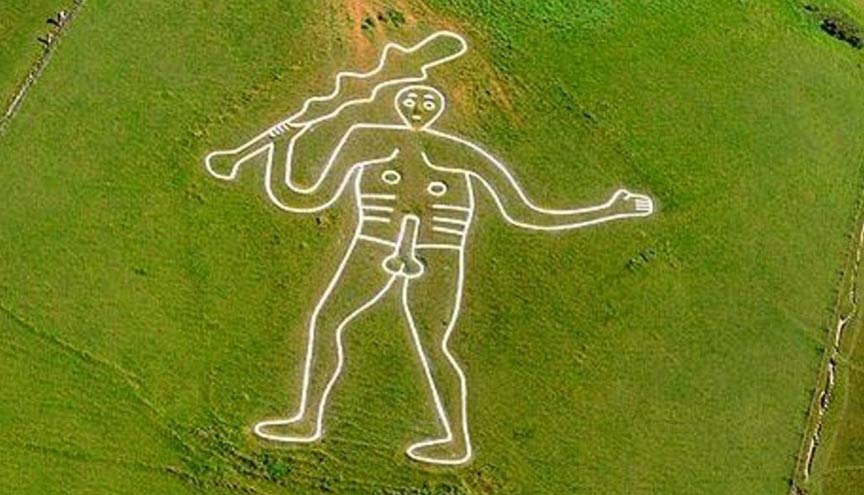"I'm delighted to have with me today the National Trust archaeologist in charge of the Cerne Abbas Dating Project, Dr. Martin Papworth who has agreed to talk to me about his organisation's biggest member
Perhaps an unfortunate choice of words by Dr Cat Jarman (bioarchaeologist, University of Oslo) of the "Gone Medieval" podcast.
The figure is in Dorset and has long been believed to date from the 1600s. Papworth's excavation suggests it is from 700-1200 instead, likely around 900 AD.
Update: There is good evidence that the figure was allowed to be overgrown for many years, then redug, rechalked, brought back. There is some evidence that the belt used to transverse the entire body, and there was also a bellybutton. This would suggest that the penis was added on later, perhaps even as late as the early 1900s. The club is also believed to have been modified more than once, and actually be a staff. We always like simple, single explanations for what something originally meant to the people who built it, regarding that as what the figure "really" was. But as digs get more complicated and almost magical geophysical techniques reveal more information, archaeologists are now forcing themselves to interpret all data in terms of its own time period only. I have mentioned before that the henges, long barrows, rows of stones, and other organised piles of rocks seem to have served different purposes in different generations.

4 comments:
The seeming reference to Hercules suggest a dating to the 3rd millennium BC during or after the Indo-European invasion. There was a 90% replacement of males during that time.
It would be interesting--ok, maybe mostly to experts--to try to trace the ups and downs of Egyptian gods. I assume shrines and even temples would be repurposed when a new dynasty indicated its own favorites. Not that you'd dare disparage any of the old ones (unless you're Akhenaten), but some stories will differ and maybe Set isn't such a good guy this century or two.
Hmmm...how do we know that Nog the caveman wasn't into self portraits. Perhaps even back then, childish humor was a thing.
I'm not sure of the context of sykes' comment but it triggered something I heard in a Jackson Crawford intro to the Ynglinga and Heimskringla sagas from about a week ago. He noted that in that work Snorri Sturluson adopted a convention of his time, late 1100s to early 1200s, to connect the Norse gods to temporal kings, in this case of Norway, via heroes of Greek mythology surrounding the Trojan War. It seems plausible to think Snorri and the Norse weren't unique in this kind of interconnection of myth, and a 1100-1200s explanation of a monument that was created a century or two before might have gone in the same direction, rather than indicating it was created thousands of years prior.
Post a Comment